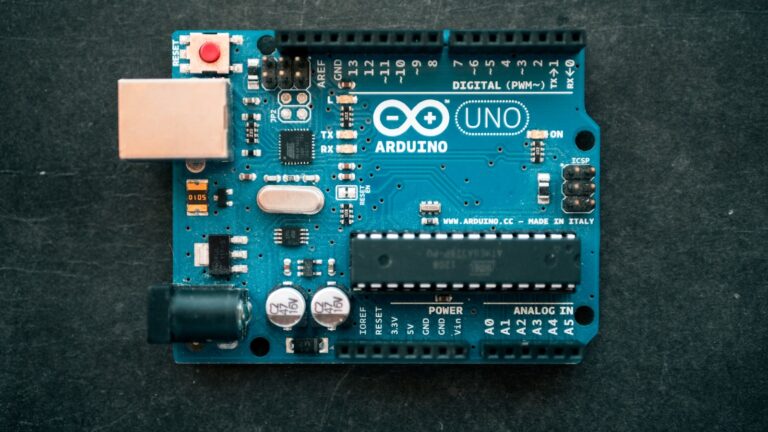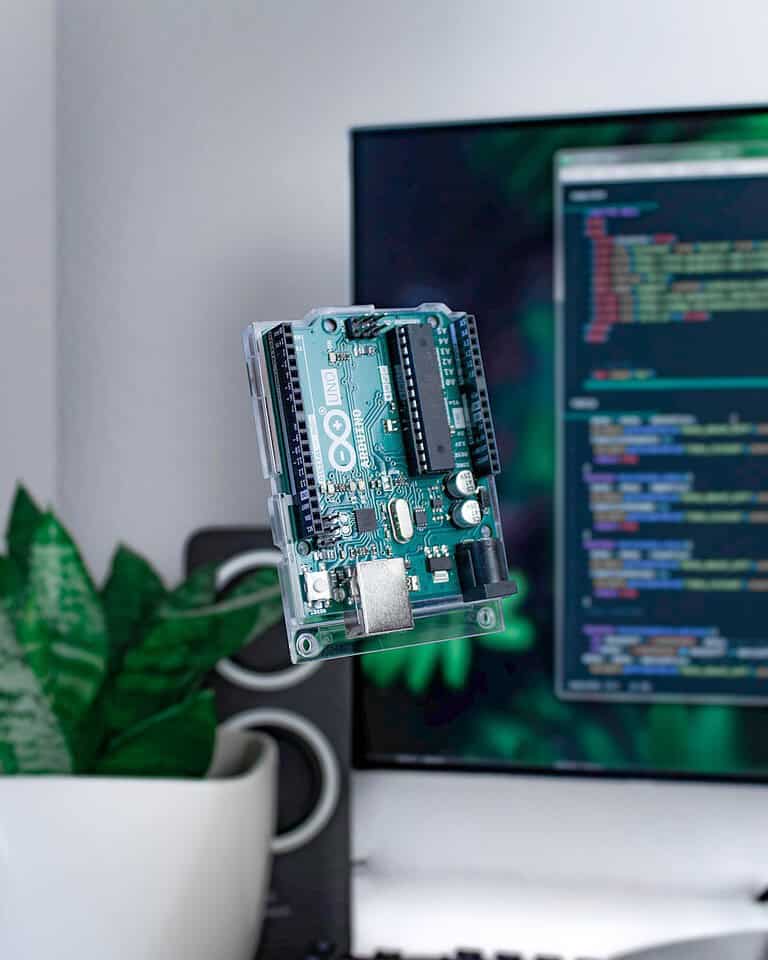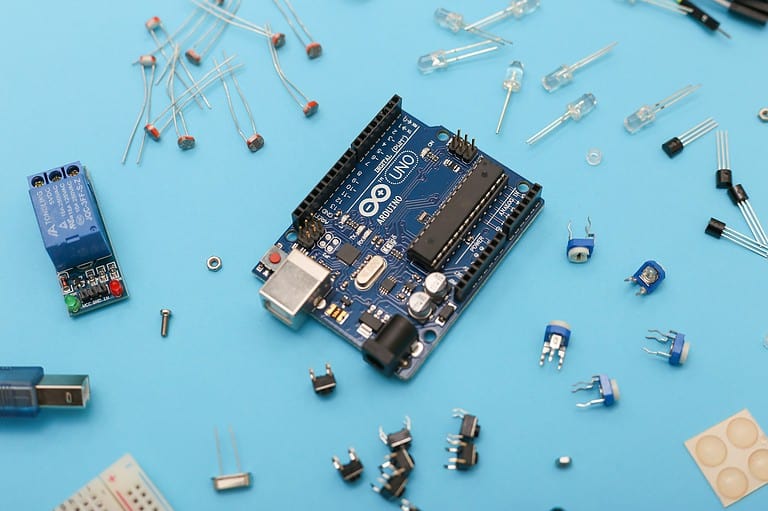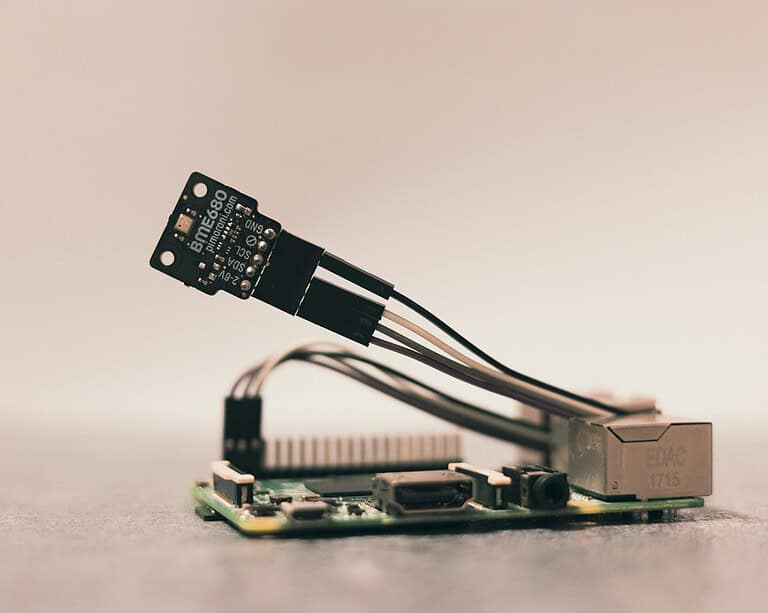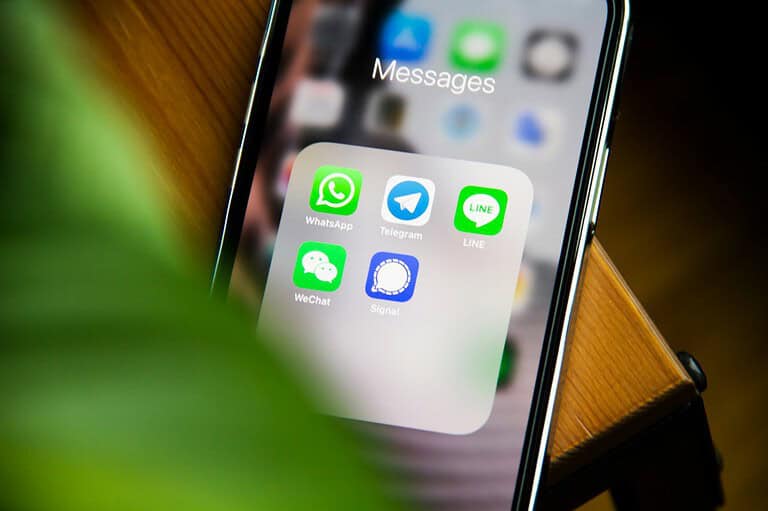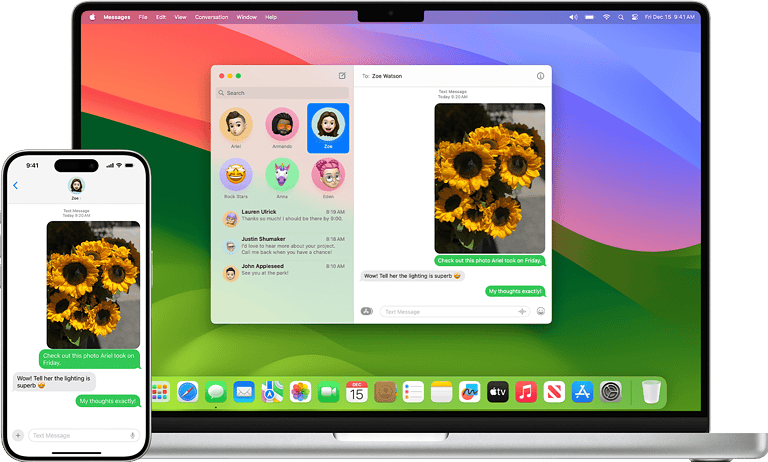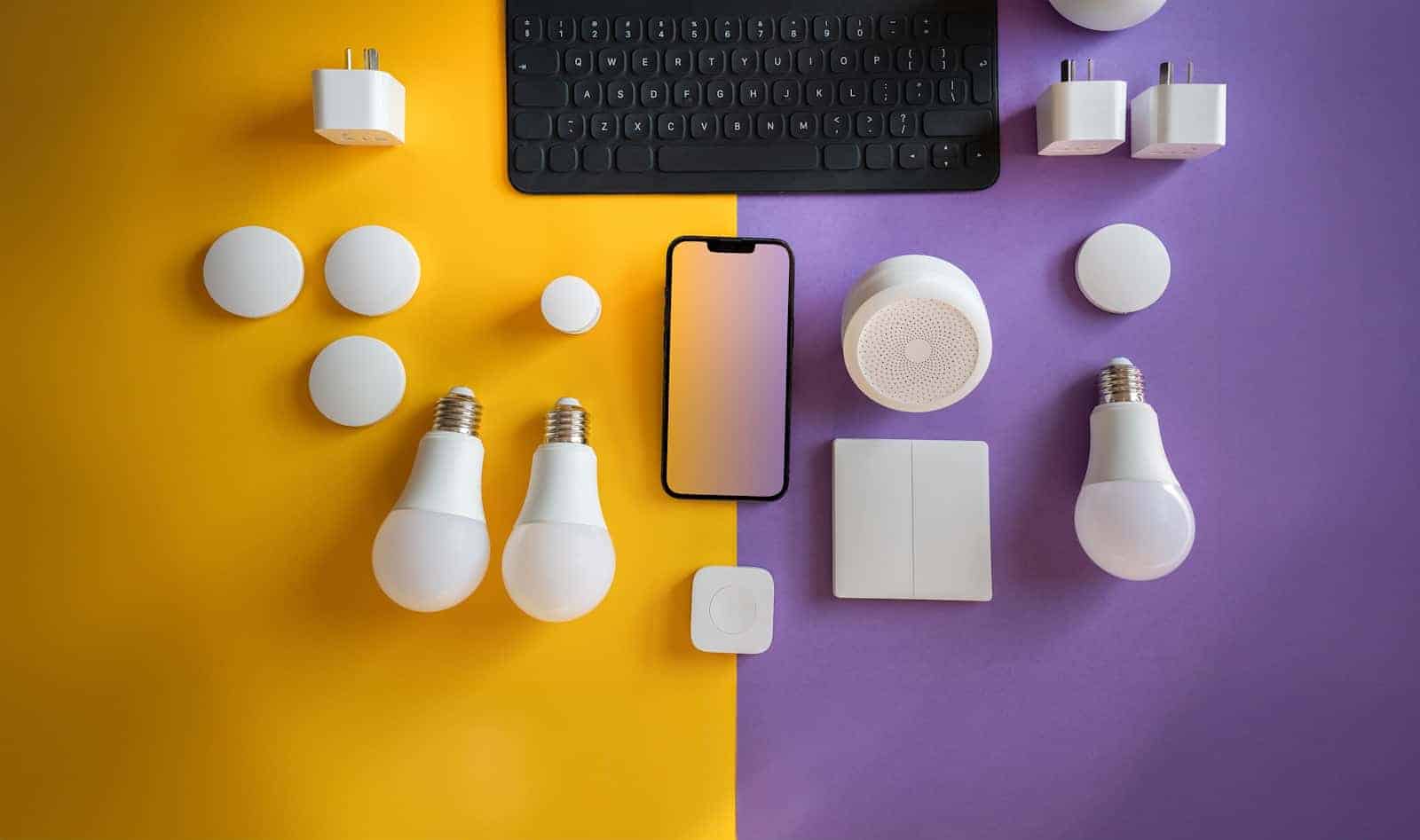
The Internet of Things (IoT) connects everyday objects to the internet, allowing devices to communicate and share data without human assistance. IoT uses sensors and software to collect and transmit information. This technology has a wide range of applications, from smart homes and wearable devices to industrial automation and healthcare.
While IoT provides benefits such as increased efficiency and improved decision-making, it also raises concerns about security and privacy. IoT devices, such as smart TVs and watches, utilize the internet to enhance their functionality. IoT is being used in homes, cities, and businesses, enabling functions such as controlling home devices and monitoring machines in factories. The growth of IoT is expected to significantly impact how we live and work.
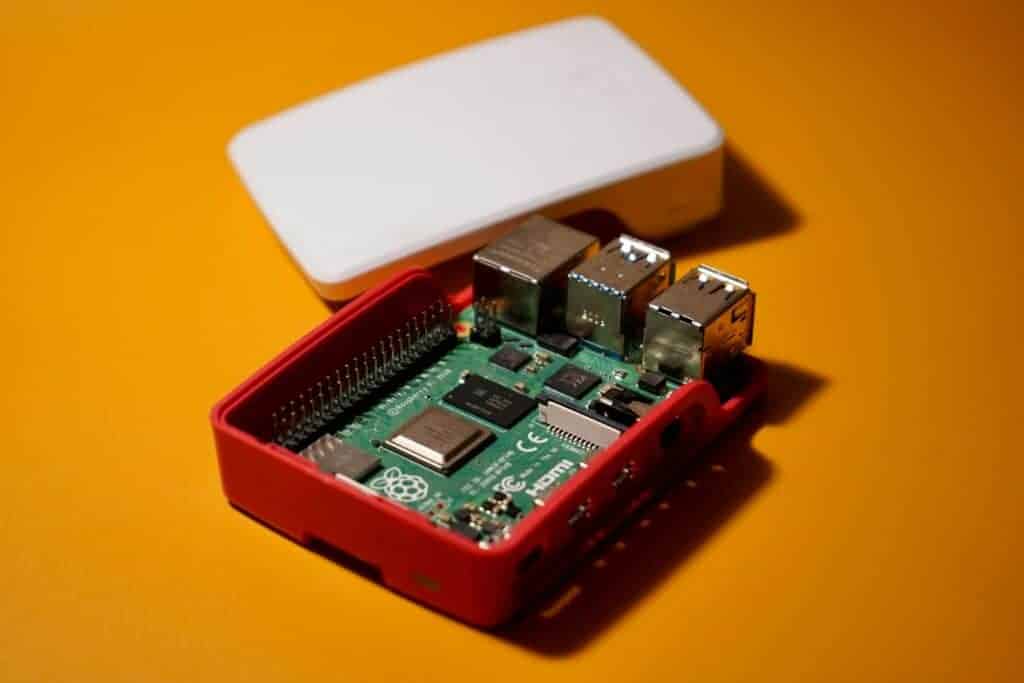
Understanding the Connected World: IoT Explained
What is the IoT?
The Internet of Things, or IoT for short, is a network of devices that are connected to the internet and can share data with each other. These devices can be anything from your smartphone and smart home devices to industrial machines and medical implants.
How Does IoT Work?
IoT devices have sensors and software that allow them to collect data and communicate with each other. This data can be used to improve efficiency, automate tasks, and create new services. For example, a smart thermostat can learn your preferences and adjust the temperature accordingly, while a smart factory can use sensors to monitor production lines and identify potential problems.
Examples of IoT Devices
- Smart home devices: Thermostats, lights, locks, security cameras, appliances, and more.
- Wearables: Fitness trackers, smartwatches, and smart glasses.
- Industrial IoT: Sensors, controllers, and software used in manufacturing, transportation, and energy.
- Healthcare IoT: Wearable health monitors, implantable medical devices, and remote patient monitoring systems.
Benefits of IoT
| Benefit | Description |
|---|---|
| Increased efficiency | IoT can automate tasks and processes, leading to increased efficiency and productivity. |
| Improved decision-making | IoT data can be used to gain insights and make better decisions. |
| Cost savings | IoT can help reduce costs by optimizing operations and reducing waste. |
| Enhanced customer experience | IoT can be used to create new products and services that enhance the customer experience. |
| New business opportunities | IoT can open up new business opportunities in areas such as smart cities, healthcare, and manufacturing. |
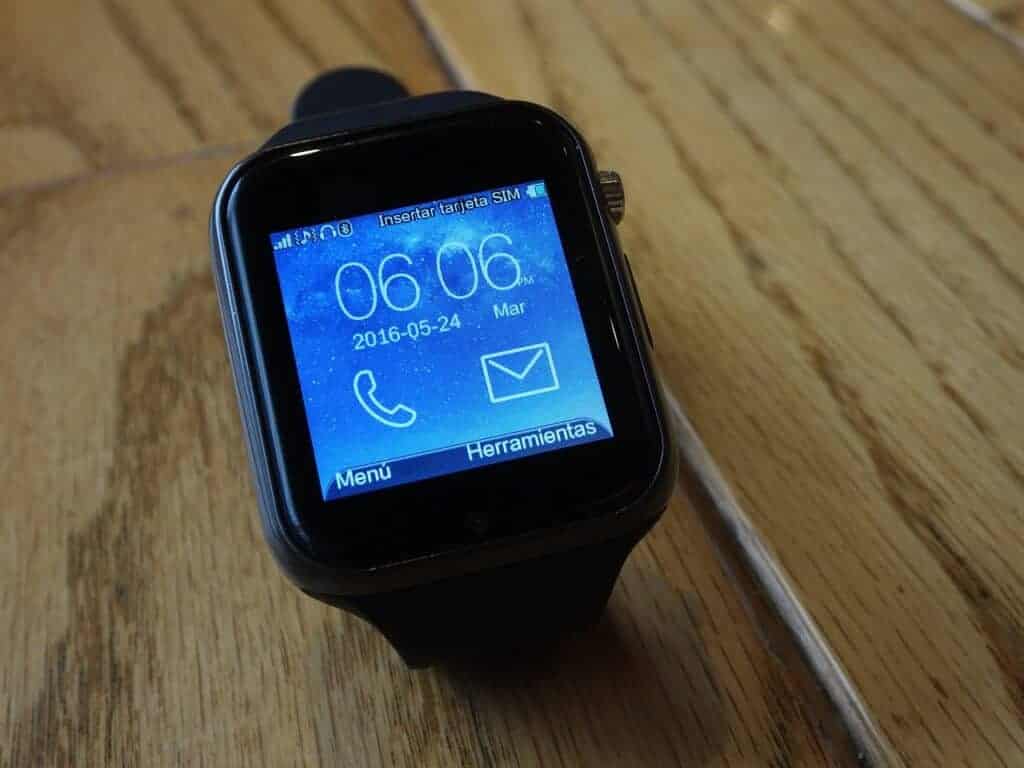
Challenges of IoT
| Challenge | Description |
|---|---|
| Security | IoT devices can be vulnerable to cyberattacks, so it’s important to secure them properly. |
| Privacy | IoT devices collect a lot of data, so it’s important to protect user privacy. |
| Interoperability | Not all IoT devices work together seamlessly, which can make it difficult to create integrated systems. |
| Complexity | IoT systems can be complex and difficult to manage. |
Key Takeaways
- IoT links regular objects to the internet for data sharing
- Smart devices use IoT to offer new features and work better
- IoT is used in homes, cities, and businesses to improve daily life
Understanding IoT: Concepts and Technologies
IoT connects physical objects to the internet. It uses sensors, networks, and software to gather and share data. This technology is changing how we interact with devices and systems.
Definition of IoT and Key Components
IoT stands for Internet of Things. It’s a network of physical objects with built-in tech. These objects can collect and share data without human help. Key parts of IoT include:
- Devices: Smart objects like thermostats or fitness trackers
- Sensors: Collect data about the environment
- Networks: Connect devices and send data
- Software: Processes and analyzes data
- Cloud: Stores and manages large amounts of data
IoT devices can be simple or complex. A smart light bulb is an example of a simple IoT device. A self-driving car is a complex one.
Role of AI and Machine Learning in IoT
AI and machine learning make IoT systems smarter. They help process the huge amounts of data from IoT devices. AI can:
- Spot patterns in data
- Make predictions
- Automate tasks
- Improve device performance
For example, AI can learn a person’s habits and adjust their smart home settings. It can also predict when machines need maintenance based on sensor data.
Communication Technologies: Wi-Fi, Bluetooth, RFID
IoT devices use different ways to connect and share data:
- Wi-Fi: For long-range, high-speed connections
- Bluetooth: For short-range, low-power connections
- RFID: Uses radio waves to track objects
Each tech has its own strengths. Wi-Fi is good for sending lots of data. Bluetooth is better for saving battery life. RFID works well for tracking items in stores or warehouses.
IoT Protocols and Standards
Protocols are rules that let IoT devices talk to each other. Some common IoT protocols are:
- MQTT: For sending messages between devices
- CoAP: Works well on devices with limited resources
- HTTP: Used for web-based IoT applications
Standards help make sure different IoT systems can work together. They cover things like security, data formats, and how devices connect. Having set standards makes it easier to build and use IoT systems.
IoT Applications and Impacts
The Internet of Things shapes many aspects of our lives. It makes homes smarter, factories more efficient, and cities safer. IoT also improves healthcare, retail, and transportation.
Smart Homes and Consumer Applications
IoT devices make homes more comfortable and secure. Smart thermostats adjust room temperature automatically. They save energy and lower bills. Voice assistants like Alexa control lights, music, and appliances. Users can ask questions or set reminders easily.
Home security systems use IoT sensors to detect intruders. They can send alerts to smartphones if something seems wrong. Smart doorbells with cameras let homeowners see who’s at the door, even when they’re not home.
IoT devices also help with everyday tasks. Smart refrigerators can track food items and suggest recipes. Robotic vacuums clean floors on their own. These gadgets save time and make life easier.
Industrial IoT and Manufacturing
Factories use IoT to boost output and cut costs. Sensors on machines track how they work. This helps catch problems before they cause breakdowns. It’s called predictive maintenance. It keeps production lines running smoothly.
IoT devices monitor inventory levels in real-time. This helps factories order supplies at the right time. It prevents shortages that could slow down work.
Smart equipment can adjust its settings based on data it collects. This improves quality control. It also reduces waste. IoT systems can track products from start to finish. This makes it easier to find and fix issues quickly.
Healthcare and Smart Medical Devices
IoT improves patient care in hospitals and at home. Wearable devices track vital signs like heart rate and blood pressure. Doctors can spot health issues early. This leads to better treatment.
Smart pills with tiny sensors help patients take medicine on time. They can send alerts to caregivers if doses are missed. Pacemakers with IoT tech can send data to doctors. This allows for remote checkups.
In hospitals, IoT devices track equipment location. This saves time for staff. Smart beds can adjust themselves for patient comfort. They can also alert nurses if a patient tries to get up.
IoT in Retail and Supply Chain Management
Stores use IoT to enhance shopping experiences. Smart shelves track inventory in real-time. This helps prevent items from going out of stock. Beacons send personalized offers to shoppers’ phones based on their location in the store.
RFID tags on products help track them through the supply chain. This improves accuracy and speeds up processes. IoT sensors in warehouses monitor temperature and humidity. This is crucial for keeping food and medicine safe.
Smart packaging can tell if products have been opened or damaged during shipping. This reduces losses and ensures quality. IoT devices in stores can also gather data on customer behavior. This helps retailers make better decisions about product placement and marketing.
Evolution of Smart Cities and Infrastructure
IoT makes cities more efficient and livable. Smart traffic lights adjust to real-time traffic flow. This reduces congestion and air pollution. Sensors on street lights can dim or brighten based on natural light levels. This saves energy.
Water systems use IoT to detect leaks quickly. This prevents waste and damage. Trash bins with sensors alert city workers when they’re full. This improves waste management.
Smart parking systems guide drivers to open spots. This saves time and fuel. IoT devices also monitor air quality and noise levels. This data helps city planners make better decisions for public health.
Transportation and Fleet Management
IoT transforms how we move people and goods. GPS trackers in vehicles provide real-time location data. This helps fleet managers optimize routes and improve delivery times.
Sensors in cars can detect maintenance needs early. This prevents breakdowns and extends vehicle life. Connected cars can share data about traffic and road conditions. This improves safety for all drivers.
Public transit systems use IoT to track buses and trains. This allows for more accurate arrival predictions. It also helps managers adjust schedules based on demand. In the future, autonomous vehicles will rely heavily on IoT to navigate safely.
Frequently Asked Questions
IoT technology has many uses and features. It connects devices to the internet and each other. This lets them share data and work together in new ways.
What are the primary applications of IoT technology?
IoT is used in homes, cities, and businesses. Smart homes use IoT for things like thermostats and security cameras. Cities use it for traffic lights and air quality sensors. Factories use IoT to track inventory and run machines.
IoT also helps in healthcare. Wearable devices can track heart rate and activity levels. This gives doctors more info about patients’ health.
How does IoT technology integrate with existing computer security measures?
IoT devices need to be protected like other computers. They use firewalls and encryption to keep data safe. Many IoT systems have their own security controls built in.
But IoT can create new risks. With so many connected devices, there are more ways for hackers to get in. Companies need to update their security plans to cover IoT.
Can you provide a brief overview of how IoT devices operate?
IoT devices have sensors that collect data. They send this data over the internet to other devices or servers. The data is then used to make decisions or take actions.
For example, a smart thermostat senses room temperature. It sends this info to your phone app. You can then change the temperature from anywhere.
What are some common examples of IoT devices in daily use?
Smart speakers like Amazon Echo are popular IoT devices. They can play music, set alarms, and control other smart home devices.
Fitness trackers count steps and monitor sleep. Smart doorbells let you see who’s at your door from your phone. Connected cars can give traffic updates and call for help in crashes.
What are the significant characteristics that define IoT?
IoT devices connect to the internet and each other. They collect and share data without human help. Many can be controlled remotely through apps or voice commands.
IoT devices often use artificial intelligence to learn and make decisions. They can work together in systems to solve complex problems.
Why is the Internet of Things considered important for modern technology?
IoT makes everyday objects smarter and more useful. It helps save energy in homes and cities. In factories, it can spot problems before they cause breakdowns.
IoT gives us more data about the world around us. This helps businesses make better choices. It also lets people manage their lives more easily.

